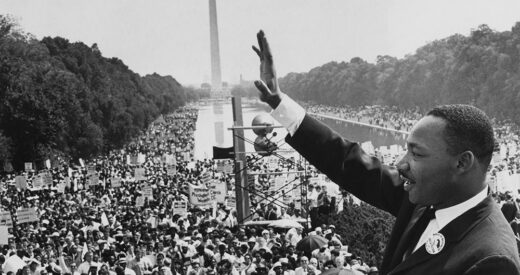“Umm…wait a second, you’re doing what?”
After 16 years of college teaching and a lifetime of writing books, this was the reaction 99.9% of the time when I told friends and colleagues that I was joining The Diversity Movement — a little shock, a bit of wonder, and a lot of implied “why would a middle-aged White guy do this?”
Perhaps not a natural step for most people, but as I explain what we do and how important it is, listeners usually move from quizzical to supportive. Their frowns and glassy-eyed looks turn positive once they get it. And, I fully understand why. Several years ago, if someone would have told me a similar story, I probably would have reacted the same way.
Let’s move past the first issue…can a middle-aged White guy be an ally and work in diversity, equity, and inclusion (DEI)? A wholehearted “yes” here, particularly if diversity is expanded to its full meaning beyond a catch-all term for race. Yet, I am a White guy in DEI. I don’t need anyone to throw roses at my feet as I pass by. It’s a great job that fulfills the same do-gooder instincts I had while teaching, but allows me to reach exponentially more people.
My personal beliefs align with my organization’s principles. If there is a thought to sum up today’s world, look no further than the eminent writer/philosopher Henry David Thoreau, who said: “Things do not change; we change.” This is where the rubber meets the road. We all have the power to create a better world, even when those around us don’t understand our choices.
Have I learned a few things? It’s only been six months, but there are some lessons that I think others who are contemplating the DEI journey in contemporary America will find beneficial. Here are six:
1. Learning never stops
What makes humans unique is the ability to think — and to think about what we are thinking. Yet, that skill is only as useful as a person wants it to be. I have a doctorate and have spent my life working as a cultural historian and author, but each day, I learn something new or uncover a hole in my education.
For me, it’s about context. Like a great jambalaya, there are lots of ingredients that can be thrown into the pot, simmered together, and wind up tasting great. I ask myself how I might pull in new information to expand my own worldview and create perspectives that better enable me to see and feel this work. Constant learning necessitates constant openness, even when the topics get emotional, personal, and challenging.
2. Meet people where they are
The amazing thing about studying critical thinking is (a) learning that most people have no idea what the term really means, and (b) finding that the majority of people create their belief systems as early teenagers and NEVER really deviate far from their teenage worldview. However, the best way to think about applying critical thinking is to view it as being critical of one’s own thinking.
In other words, acting critical is not what critical thinking is all about. Instead, it is the willingness to reassess your own views. While most people think they are strong critical thinkers, their self-assessment may be based on an ill-conceived definition of that term.
As such, it’s important to realize that DEI campaigns and culture change initiatives task employees with questioning many of the fundamental beliefs they have cemented over lifetimes. The work may have a transformational consequence, but it cannot happen all at once. Changing a person’s worldview takes time, persistence, and understanding that the journey isn’t uniform and may not even be sequential or straightforward, despite the mostly-agreed-upon end goal of a more just and equitable workplace and society.
3. The joy of teamwork and teammates
Another aspect of my learning trajectory is engaging with teammates who have life experiences and expertise in areas different than mine. For example, I’ve learned more about leadership (in DEI and generally) from actively listening to our CEO, Donald Thompson, than in the dozens of books or thousands of articles and essays I’ve read. I’ve learned more about being an empathetic leader from watching how Jackie Ferguson manages our team better than I could have ever imagined.
The joy in these experiences is that I’m open to ingesting the lessons — truly open — and not just paying lip service to new ideas (especially at an age when most White men like me [in their heart of hearts] are pretty closed off). My teammates and I don’t know everything or even pretend to know a lot, but we learn from one another every day, and I am a stronger thinker and ally because of the knowledge they are willing to share with me.
4. Pushing beyond the checkbox
Perhaps more than ever before, people demand authenticity. What does “authentic” mean for organizations in this heightened environment? The answer in terms of DEI is that words, images, and actions must equal reality. Employees, customers, prospects, and other stakeholders are not going to blindly fall in line with what organizations project externally if there aren’t also meaningful efforts behind the chatter.
In other words, people are watching! If a company creates a bunch of commercials featuring Black or Asian actors using their products, but the leadership team isn’t diverse, stakeholders take notice. The effort must be meaningful because people are finely tuned to sniffing out when the work is being done merely for compliance.
5. “Diversity fatigue” is real — and harrowing
By nature, I am a realistic optimist — someone who anticipates better days ahead, but has been kicked around enough to know that a brighter future requires collective hard work. In today’s “us vs. them” world, the issues the media pays attention to are inevitably divisive and (seemingly) showcased to increase discord. DEI is one of those media footballs (see the coverage of everything from George Floyd statues being defaced to portrayals of Critical Race Theory).
At the same time, people are blasted with tens of thousands of new images, ideas, and impulses every day. Even topics as critical as DEI eventually face backlash as people throw up their hands. My hope is that diversity fatigue is being triggered by backlash against controversy (our self-perception as futuristic, problem-solvers), not a cynical indication that people are inherently self-consumed or hateful.
The important idea here is that we’re not even in the first microsecond of an era that has DEI at its center. If there is fatigue, it must be countered with inclusive leadership at every level that champions its significance in organizations, communities, families, and neighborhoods.
6. Building workplace excellence
A key takeaway for me over the last six months is that diversity is so much more than race, although this is clearly not what most people think of when they hear the word. Recognizing that diversity stretches to include so many additional factors — from economic inequality to gender rights, ageism, and disability, for example — gives us a better way to conceptualize diversity’s role in what The Diversity Movement calls workplace excellence.
From this perspective, DEI initiatives benefit organizations not only by increasing brand reach, loyalty, and profits, but also by creating more just and equitable internal and external cultures. People working in stronger cultures are universally more productive, creative, and eager for the organization’s long-term success because they are physically and emotionally invested. Thus, a culture shift that utilizes DEI as a tool to unlock personal and team greatness leads to a better — more excellent — workplace.
These are only some of the lessons I’ve learned in my first six months in the DEI space. I’m excited and humbled to think of what the next six months and years will teach me. As a person who is committed to lifelong learning, understanding the context and practice of DEI — especially in light of the historical moment we’re in — has been a strenuous learning curve, but also greatly satisfying. DEI isn’t only about people or profits. It’s also about unlocking potential.
If you agree, drop me a line, and tell me why. And, if you don’t, please do the same. Part of my learning journey is based on listening and engaging. I would enjoy hearing what you think. Thanks!
In addition to serving as Director, Business Intelligence & Content Strategy at The Diversity Movement, Bob Batchelor is an award-winning cultural historian and author of 12 books, including Stan Lee: The Man Behind Marvel.






